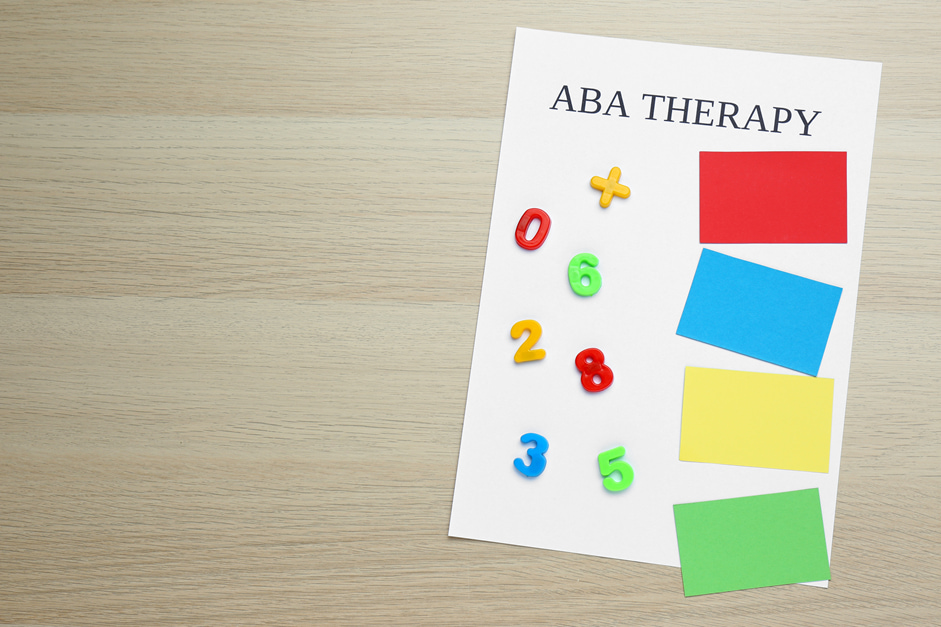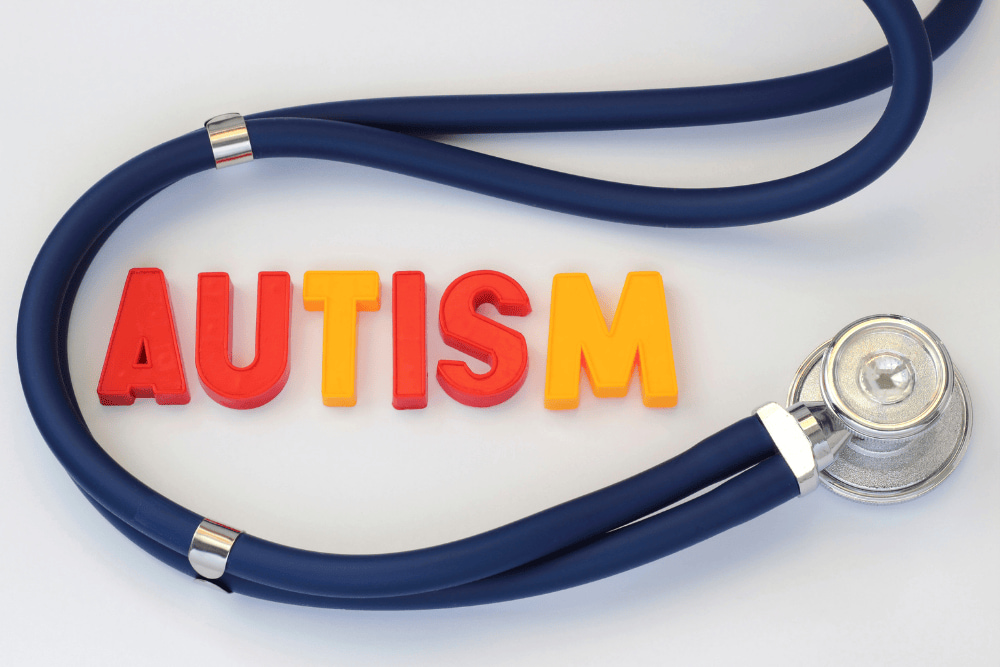Understanding Autism Spectrum
Understanding autism spectrum is crucial for recognizing the diverse experiences of individuals affected by autism. This section will clarify what being "on the spectrum" entails and outline the various disorders included within the autism spectrum.

What Does "On the Spectrum" Mean?
Being "on the spectrum" typically refers to a range of behavioral and developmental issues associated with autism spectrum disorder (ASD). These challenges commonly affect communication, social skills, and play abilities. The term encompasses various diagnoses, including autism, autism spectrum disorder, Asperger's Syndrome (considered high-functioning autism), and Pervasive Developmental Disorder - Not Otherwise Specified (PDD-NOS), which is also known as atypical autism.
The designation of "spectrum" suggests a wide variety of characteristics and symptoms, emphasizing the individuality of each person's experience. The term may be used interchangeably with continuum, indicating that rather than distinct categories, there are varying degrees of traits that individuals may posses.
Range of Autism Spectrum Disorders
The autism spectrum incorporates various disorders, including:
Autism: A general term for a range of conditions affecting communication and social interaction.
Asperger Syndrome: Often described as high-functioning autism, individuals may have milder symptoms.
PDD-NOS: Atypical autism that doesn't fully meet the criteria for other specific diagnoses.
Rett Syndrome: A rare genetic disorder that predominantly affects females and includes loss of motor skills and speech.
Childhood Disintegrative Disorder: Additionally rare, it involves a loss of previously acquired skills and developmental milestones.
The spectrum emphasizes that these various types share common features but also exhibit significant differences among individuals. Each person will have unique challenges and strengths depending on their specific diagnosis and personal circumstances. For more information about the characteristics and levels of autism, check out the sections on types of autism and levels of autism.
Understanding these definitions and distinctions is essential for providing appropriate support and resources. Whether addressing needs in educational settings or considering therapies, recognizing the varied nature of autism is fundamental to fostering inclusion and understanding in society. For guidance on therapies that can assist families at home, visit our articles on home therapy for autism and autism at home.
Diagnosing Autism Spectrum
Diagnosing autism or related Autism Spectrum Disorder (ASD) involves a comprehensive evaluation process. This careful assessment is integral to understanding where an individual falls "on the spectrum."
Evaluation Process for ASD
The evaluation process for autism spectrum disorders is intricate and must include the analysis of a child's socialization, communication, and behavior patterns. It entails a team of specialists examining various aspects of the child's development as there is no single medical test available for a definitive diagnosis.
The following components typically make up the evaluation process:
Initial Screening: Monitoring signs of developmental delays, usually conducted during routine pediatric visits.
Comprehensive Assessment: In-depth assessments by specialists, including psychologists, speech-language pathologists, and pediatricians.
Behavioral Observations: Observations of the child's behavior in different settings, such as home and school.
Parent and Teacher Input: Gathering insights from parents and teachers regarding the child’s socialization and communication skills.
Determining the presence of ASD generally occurs around the age of 4.5 years. However, many children exhibit symptoms as early as 12 to 18 months. Early signs can help initiate the evaluation process sooner.
Importance of Early Detection
Early detection of autism spectrum disorder plays a critical role in effective intervention and support. Identifying ASD at an earlier age allows families and specialists to implement appropriate interventions, which can lead to significant improvements in communication and social skills.
Benefits of early detection include:
Tailored Therapy: Designing a specialized treatment program to address specific communication and behavioral needs.
Enhanced Support: Providing families with necessary resources and support systems early in the process.
Improved Outcomes: Increasing the likelihood of more favorable developmental trajectories and quality of life.
Engaging in early evaluations not only assists in appropriate treatment planning but also allows for ongoing support, creating a positive environment for individuals diagnosed with autism. For additional insights on treatment methods, explore topics on home therapy for autism and spectrum support.
Characteristics of Autism Spectrum
Understanding the characteristics of individuals who are "on the spectrum" provides valuable insight into their unique experiences. This section highlights the social communication challenges and behavioral patterns frequently encountered by those with Autism Spectrum Disorders (ASD).
Social Communication Challenges
Individuals with ASD often experience significant social communication difficulties. Common impairments include a lack of appropriate eye contact, challenges in initiating or responding to joint attention, and other social difficulties. These challenges can hinder their ability to connect with others and navigate social situations effectively.
The communication deficits present in persons with ASD can vary widely. Some individuals may struggle with both receptive (understanding) and expressive (speaking) language skills. For instance, several may be nonverbal and rely on alternative communication devices, while others might express themselves verbally but still face significant communication hurdles.
To enhance social understanding, strategies such as social narratives or Social Stories™ can be employed. These individualized narratives describe specific social situations, highlight relevant cues, and provide examples of appropriate responses.
Behavioral Patterns and Interests
People on the spectrum may have unique behavioral patterns and specialized interests that differ from typical same-age peers. Although they might engage in similar activities, their level of intensity and focus can vary significantly. This could stem from a limited repertoire of alternative behaviors or a strong preference for repeating certain tasks.
The interests of individuals with ASD can also manifest in a heightened sensitivity to various sensory inputs. They may demonstrate hypo-sensitivity (under-responsiveness) or hyper-sensitivity (over-responsiveness) to sensory stimuli, which influences their engagement with the environment around them.
Understanding these characteristics is vital for developing effective support strategies. For more information on the different types of autism and their levels, visit our articles on types of autism and levels of autism. Furthermore, resources such as spectrum support can offer additional guidance in navigating these challenges.
Impact on Daily Life
Sensory Sensitivities
Individuals who are on the spectrum may experience various sensory sensitivities, which can significantly impact their daily interactions and experiences. These sensitivities can manifest as hyper-sensitivity (over-sensitivity) or hypo-sensitivity (under-sensitivity) to different forms of sensory input, such as sounds, lights, textures, and smells.
Type of Sensory SensitivityDescriptionHyper-sensitivityHeightened response to sensory stimuli, leading to discomfort or distress. Individuals may cover their ears in loud environments or avoid bright lights.Hypo-sensitivityReduced response to sensory input, which can result in seeking out more intense stimulation, such as playing with very textured objects or engaging in loud activities.
These sensory challenges can lead to difficulties in situations like crowded places, public events, or even everyday settings such as schools or homes. It is important for caregivers and educators to recognize these sensitivities and tailor environments to reduce discomfort wherever possible. Strategies included in spectrum support can help individuals manage sensory sensitivities better.
Executive Function Impairments
Executive function impairments are also prevalent among those on the autism spectrum and can influence a variety of cognitive skills necessary for daily functioning. These skills encompass attention, working memory, planning, reasoning, sequencing, and flexible thinking. Executives functioning difficulties may affect social interactions, academic performance, self-regulation, and daily routines.
Area Affected by Executive Function ImpairmentsImpact on Daily LifeSocial InteractionsDifficulty following conversations or understanding social cues can lead to challenges in making and maintaining friendships.AcademicsProblems with organizing tasks, managing time, and completing assignments may hinder academic success.Self-RegulationIndividuals may struggle with controlling impulses, emotions, and behaviors, leading to outbursts or meltdowns.Daily ActivitiesCompleting daily routines and chores can become challenging without effective planning and organizational skills.
Understanding these impairments is crucial for providing effective support and interventions, especially in settings such as home therapy for autism or specialized programs like ABA at home for parents. By recognizing both sensory sensitivities and executive function challenges, families and educators can foster environments that enhance well-being and promote successful daily functioning for individuals with autism.
Social Interaction Challenges
Individuals who are on the spectrum often face difficulties with social interactions. They may struggle to interpret social cues, understand what to say, or determine how to behave in various situations. These challenges can lead to social isolation and increased vulnerability to bullying, as research indicates that people with autism experience bullying more frequently than any other type of disability.
Strategies for Enhancing Social Skills
To support individuals on the autism spectrum, a variety of strategies can be employed to improve their social understanding and skills at any age. These strategies may include:
Implementing these strategies can significantly assist individuals in developing their social skills and navigating social contexts more effectively.
Coping with Social Difficulties
Coping with social challenges involves recognizing and addressing specific difficulties that may arise in social interactions. By exploring effective coping mechanisms, individuals can improve their experiences in social settings. Some strategies include:
These strategies can empower individuals on the spectrum to navigate social situations with confidence, enhancing their interactions and overall well-being. For more information on autism levels, check out our articles on the levels of autism and specifically level 1 autism, level 2 autism, and level 3 autism.
Stigma and Autism
Stigma associated with autism can significantly impact those who are on the spectrum. This stigma is often rooted in ignorance, prejudice, and discrimination, which can lead to detrimental effects on the mental and physical health of autistic individuals. Understanding these impacts is crucial in fostering a supportive environment.
Effects of Stigma on Autistic Individuals
The stigma surrounding autism can affect various aspects of an autistic individual's life. Key effects include:
EffectDescriptionMental HealthHigher rates of anxiety and depressionSocial IsolationWithdrawal from social situationsSelf-EsteemDecreased self-worth and identity acceptanceCamouflagingConcealing natural behaviors to fit in
Managing Camouflaging Behaviors
As a response to stigma, many autistic individuals adopt camouflaging behaviors—strategies to hide their autistic traits in social settings. While this can sometimes allow for easier interactions, it often comes with costs to personal authenticity and mental health.
Key strategies to manage these behaviors include:
By acknowledging and addressing stigma, one can work towards fostering a culture of acceptance and understanding. Resources like spectrum support can help individuals navigate their experiences related to autism and stigma effectively.


.jpg)





.png)



